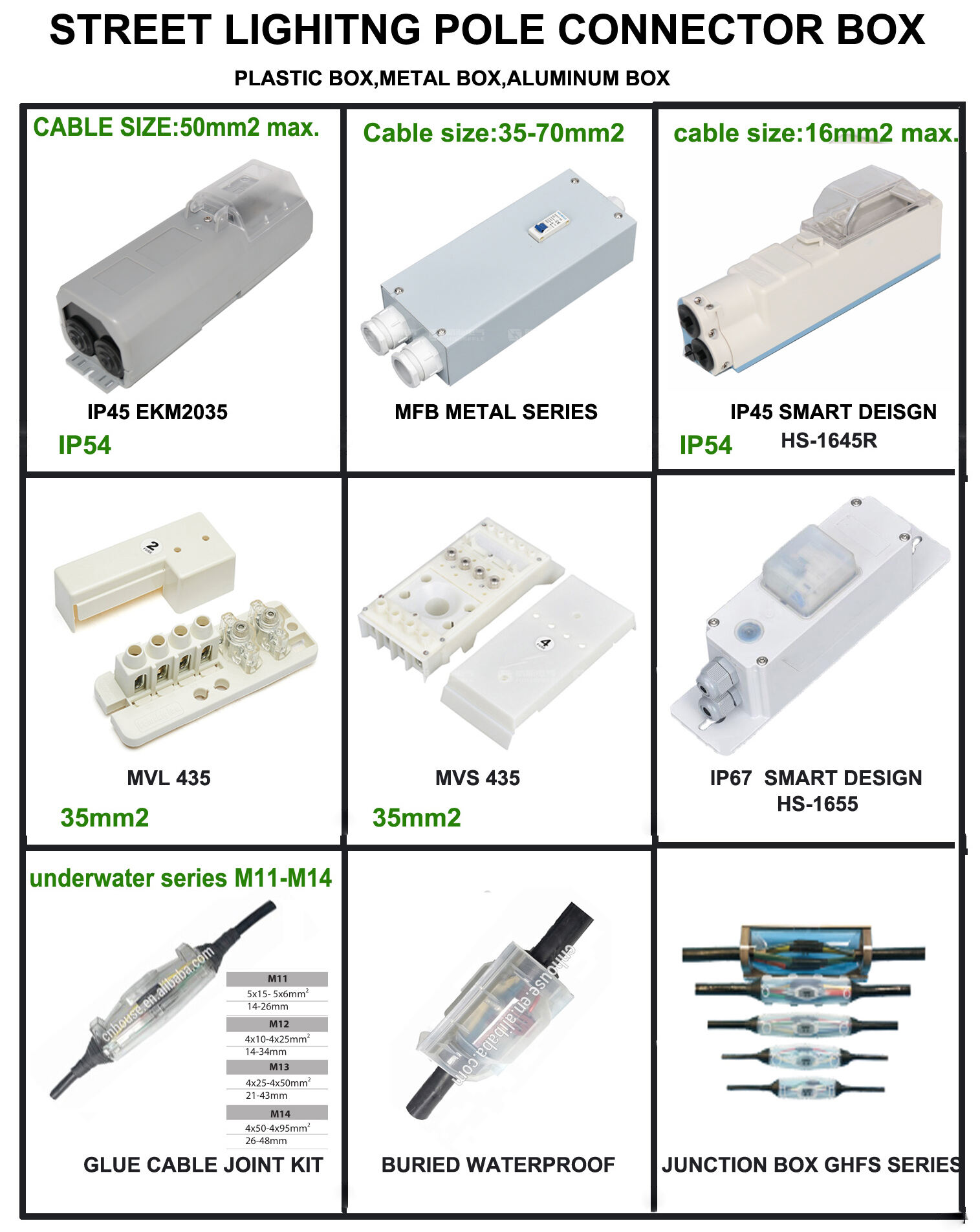The Crucial Role of Junction Boxes in Street Lighting Systems
In the fabric of urban infrastructure, street lighting systems stand as silent sentinels, illuminating the paths of pedestrians, guiding the movement of vehicles, and fostering a sense of security after the sun sets. However, the seamless operation of these essential systems hinges on a component that often goes unnoticed by the public: junction boxes. Junction boxes play a crucial role in ensuring the safety and efficiency of street lighting systems. These protective enclosures safeguard electrical connections from environmental factors, reducing the risk of short circuits and electrical failures. In this article, we will explore the importance of junction boxes, their design, and how they contribute to the longevity of street lighting installations.
The Backbone of Street Lighting: The Significance of Junction Boxes
Street lighting systems are not merely about casting light; they are fundamental to urban safety. They enhance visibility during nighttime, deter criminal activities, and ensure public security. But the effectiveness of these systems is intricately linked to the quality of their electrical components, with junction boxes being a linchpin. Serving as a central hub for electrical connections, junction boxes are the unsung heroes that shield wires and connectors from the onslaught of moisture, dust, dirt, and other external elements.
In a bustling city, where street lights are exposed to a variety of environmental conditions daily, from rain and snow to the grime of traffic, junction boxes act as a protective barrier. By preventing damage to electrical connections, they help maintain consistent lighting levels across the cityscape. This consistency is not only aesthetically pleasing but also crucial for ensuring that drivers can see clearly on the roads and pedestrians can navigate safely. Moreover, by reducing the likelihood of electrical issues, junction boxes significantly cut down on maintenance costs for municipalities, allowing resources to be allocated more effectively elsewhere.
Shielding Against Hazards: The Safety - Oriented Design of Junction Boxes
One of the primary and most critical benefits of junction boxes is their ability to prevent electrical hazards. Exposed wires in a street lighting system are a recipe for disaster. They can easily lead to short circuits, which can result in widespread outages, leaving entire neighborhoods in the dark. In more severe cases, short circuits can even trigger fires, posing a significant threat to property and human life.
Junction boxes are meticulously designed with materials that possess excellent heat resistance and corrosion - fighting properties. High - quality plastics and metals are often used in their construction, ensuring that the electrical connections housed within remain secure and functional over an extended period. This protective feature is of utmost importance in areas prone to extreme weather conditions. For example, in coastal cities where saltwater - laden air can corrode electrical components rapidly, or in regions that experience intense heatwaves, junction boxes with robust materials act as a safeguard, preserving the integrity of the street lighting system.
Facilitating Maintenance and Innovation: The Practical Advantages of Junction Boxes
Beyond safety, junction boxes offer significant practical advantages when it comes to the maintenance and upgrade of street lighting systems. When repairs or replacements are necessary, technicians can quickly and easily access the junction box. This accessibility streamlines the inspection process, allowing them to check connections, identify any issues, and make the required adjustments promptly. As a result, downtime is minimized, and the street lighting system can be restored to full functionality in a timely manner, ensuring that urban areas remain well - lit and safe.
Furthermore, junction boxes are designed with foresight to accommodate future technological advancements. With the growing popularity of LED lighting technologies due to their energy efficiency and long lifespan, junction boxes can be engineered to integrate these upgrades seamlessly. This adaptability means that municipalities can embrace new, more sustainable lighting solutions without having to overhaul their entire electrical infrastructure, saving both time and money in the long run.
The Art and Science of Design: Optimizing Junction Boxes for Performance
The design of junction boxes is a delicate balance between art and science. They must be carefully sized to accommodate the specific number of electrical connections and the type of wiring used in the street lighting system. A box that is too small may lead to overcrowding of wires, increasing the risk of electrical problems, while a box that is too large may be inefficient and more prone to environmental intrusion.
In addition to size, the installation of junction boxes is equally critical. Following industry standards and local regulations is non - negotiable to ensure optimal performance. Proper installation techniques, such as secure mounting, correct sealing, and accurate wiring, not only enhance the protective role of junction boxes but also contribute to the overall reliability of the street lighting system. A well - installed junction box can withstand the test of time and environmental stress, providing long - lasting protection for the electrical components within.
The Future of Street Lighting: Smart Junction Boxes on the Horizon
As urban areas continue to expand and evolve, the demand for reliable and efficient street lighting systems is set to soar. In response, the industry is witnessing exciting innovations in junction box technology. Smart junction boxes, equipped with advanced monitoring capabilities, are emerging as a game - changer. These intelligent systems can collect and transmit real - time data on the status of electrical connections, such as voltage levels, current flow, and temperature.
This data - driven approach allows for proactive maintenance, enabling technicians to identify potential issues before they escalate into major problems. By predicting and preventing outages, smart junction boxes not only enhance the reliability of street lighting but also align with the broader vision of smart city initiatives. As cities strive to become more connected, sustainable, and efficient, the integration of smart technology into junction boxes represents a significant step forward in the evolution of urban infrastructure.
In conclusion, junction boxes are indispensable components of street lighting systems, offering protection, safety, and ease of maintenance. As the industry continues to innovate, the role of junction boxes will only become more crucial in ensuring that urban environments remain well - lit, safe, and vibrant. Recognizing the importance of these seemingly humble enclosures underscores the need for high - quality materials, thoughtful design, and the adoption of cutting - edge technology in electrical infrastructure, paving the way for a brighter and more sustainable future for our cities.
Table of Contents
- The Crucial Role of Junction Boxes in Street Lighting Systems
- The Backbone of Street Lighting: The Significance of Junction Boxes
- Shielding Against Hazards: The Safety - Oriented Design of Junction Boxes
- Facilitating Maintenance and Innovation: The Practical Advantages of Junction Boxes
- The Art and Science of Design: Optimizing Junction Boxes for Performance
- The Future of Street Lighting: Smart Junction Boxes on the Horizon


